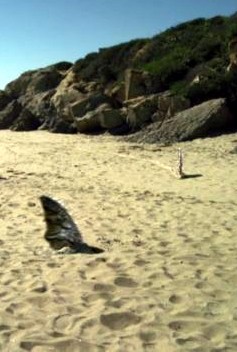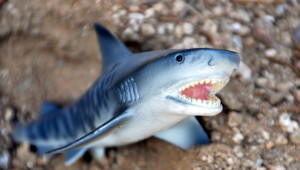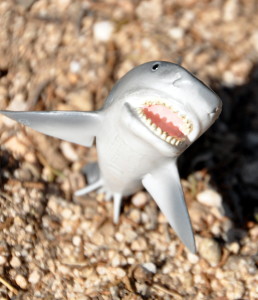by Jane St. Clair
The Arizona Jackalope
I’ve never seen an Arizona Jackalope myself but then, Arizona Jackalopes are quite rare. Part of the reason is they only mate during lightning strikes in monsoon season.
Common jackalopes, sometimes called warrior rabbits, are native to Wyoming, New Mexico, Nebraska and Colorado. They aren’t the same as Arizona Jackalopes.

Common jackalopes look like huge rabbits with antlers. They’re extremely mean and fierce. The Arizona jackalope is much bigger than the common jackalope, who only grow to be about two feet tall. Ours are at least eight feet tall and weigh well over 1200 pounds.
Back in the Old West, Arizona cowboys rode jackalopes, especially during round-ups, because they proved to be more durable than horses.
You can catch jackalopes by putting whiskey out for them, their favorite drink. Once your jackalope is drunk, he’ll move slowly and unsteadily, and therefore he’ll be easier for you to trap, although it will still be very hard to do. The problem with capturing jackalopes is they can use language. They’re known to yell, “He’s over there!” in order to throw you off track when you are trying to catch them.
The Arizona Jackalope is an endangered species. However, the little bitty ones in other Western states are not. In fact, you can still get a hunting license for the Wyoming Jackalope, although their hunting season is restricted to June 21st between the hours of midnight and 2 A.M.
Jackalopes are probably related to wolpertingers.
Wolpertingers are a German species that also look like rabbits with antlers, except wolpertingers usually have feathered wings. Another distant cousin to jackalopes is the Swedish skvader, a cross between a rabbit and a grouse.
The Arizona Sand Shark
 Arizona Sand Sharks are often confused with California Sand Sharks, even though they are two distinct species. The main difference is since Arizona has no ocean, our Sand Sharks swim only in washes and rivers, which are dry most of the year. Arizona Sand Sharks have adapted to land, but they can only live without water for a few days.
Arizona Sand Sharks are often confused with California Sand Sharks, even though they are two distinct species. The main difference is since Arizona has no ocean, our Sand Sharks swim only in washes and rivers, which are dry most of the year. Arizona Sand Sharks have adapted to land, but they can only live without water for a few days.
Arizona Sand Sharks are deadly to humans, so it’s important to remain at least three bus-lengths away from them. As you can see, our Sand Sharks have rows and rows of lethal teeth as sharp as a new Bowie knife.
(It was very dangerous to get this picture for you.)
(Especially when he jumped up for an attack!)
You’ll only see Arizona Sand Sharks after a desert wash or a dry desert river fills up during monsoon season.
 On the other hand, California Sand Sharks are very common. They often scoot along beaches, terrifying everyone in sight. By the way, beach balls look exactly like seals’ eggs to California Sand Sharks. Since seals’ eggs are California Sand Sharks’ favorite food, this means you have to be particularly alert when you’re playing beach volleyball.
On the other hand, California Sand Sharks are very common. They often scoot along beaches, terrifying everyone in sight. By the way, beach balls look exactly like seals’ eggs to California Sand Sharks. Since seals’ eggs are California Sand Sharks’ favorite food, this means you have to be particularly alert when you’re playing beach volleyball.
In 2012 a horror movie called “Sand Sharks” went straight to video, becoming an instant classic among those of us who love these amazing animals.
For more silly Arizona posts, see How to Resuscitate a Lizard and Grifting Along with the Tumbling Tumbleweed.
Update: Jane’s short story, “The Man Who Liked 1959,” will be published in an anthology now available to order from Twisted Road Publications. see Walking The Edge – A Southern Gothic Anthology





